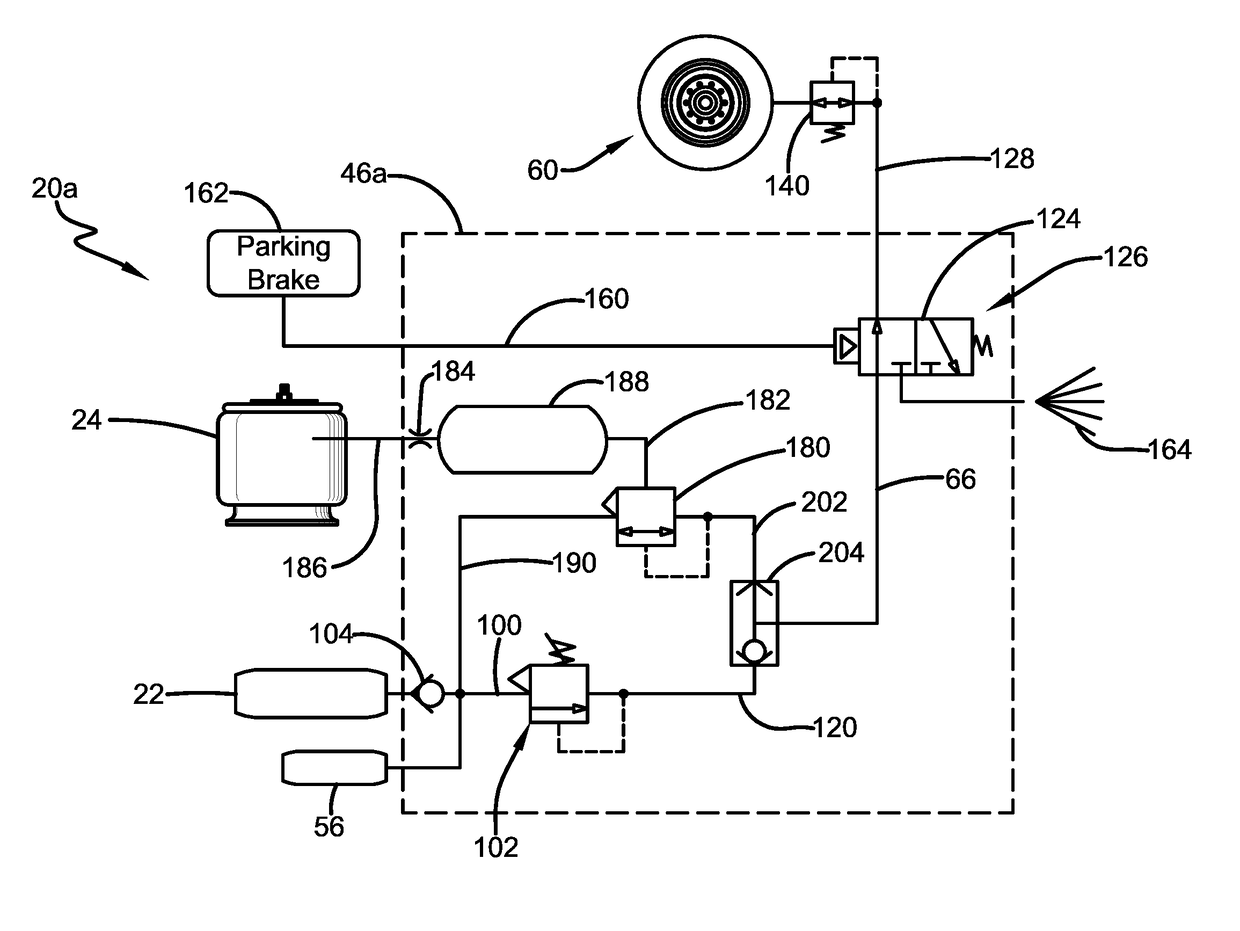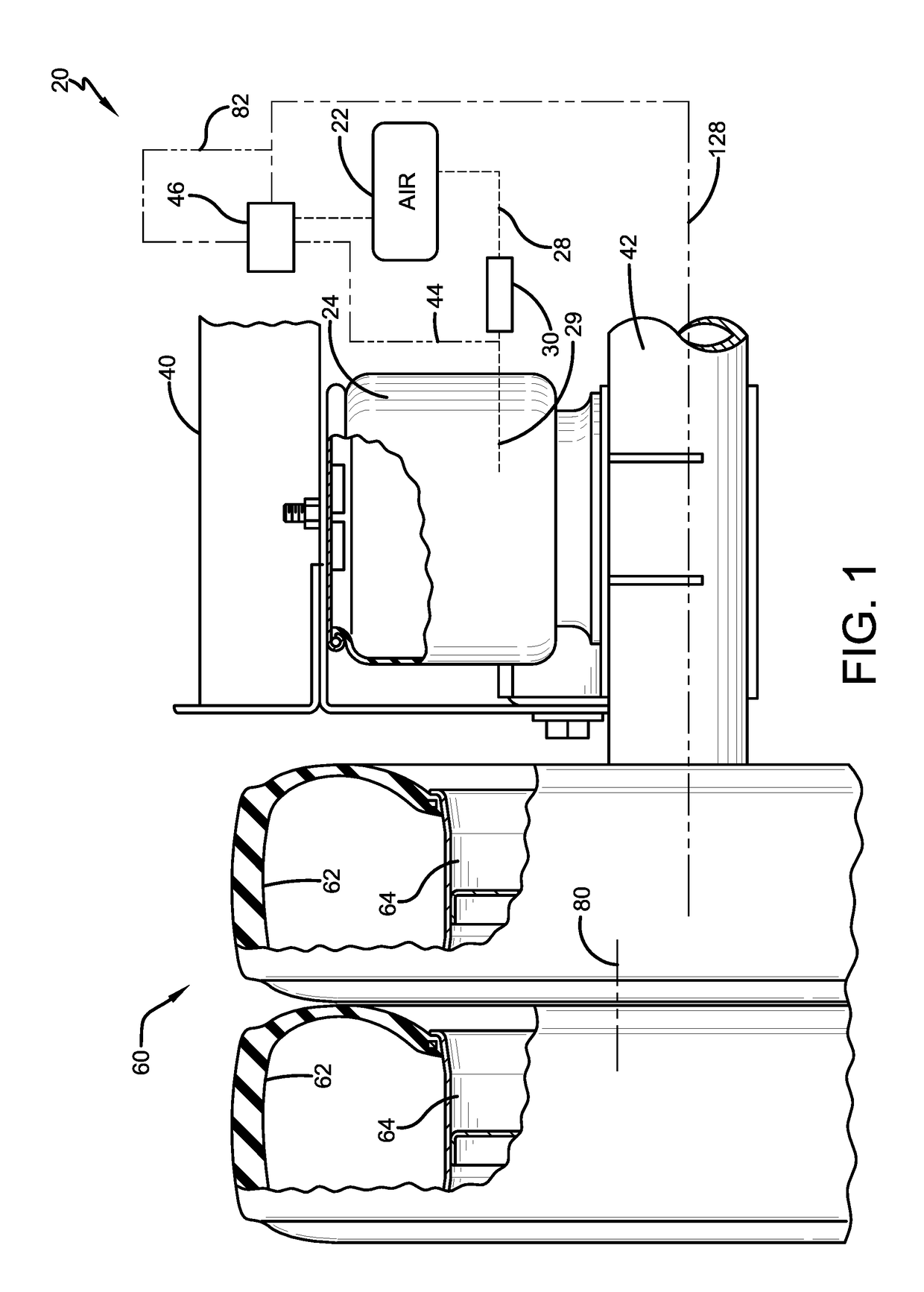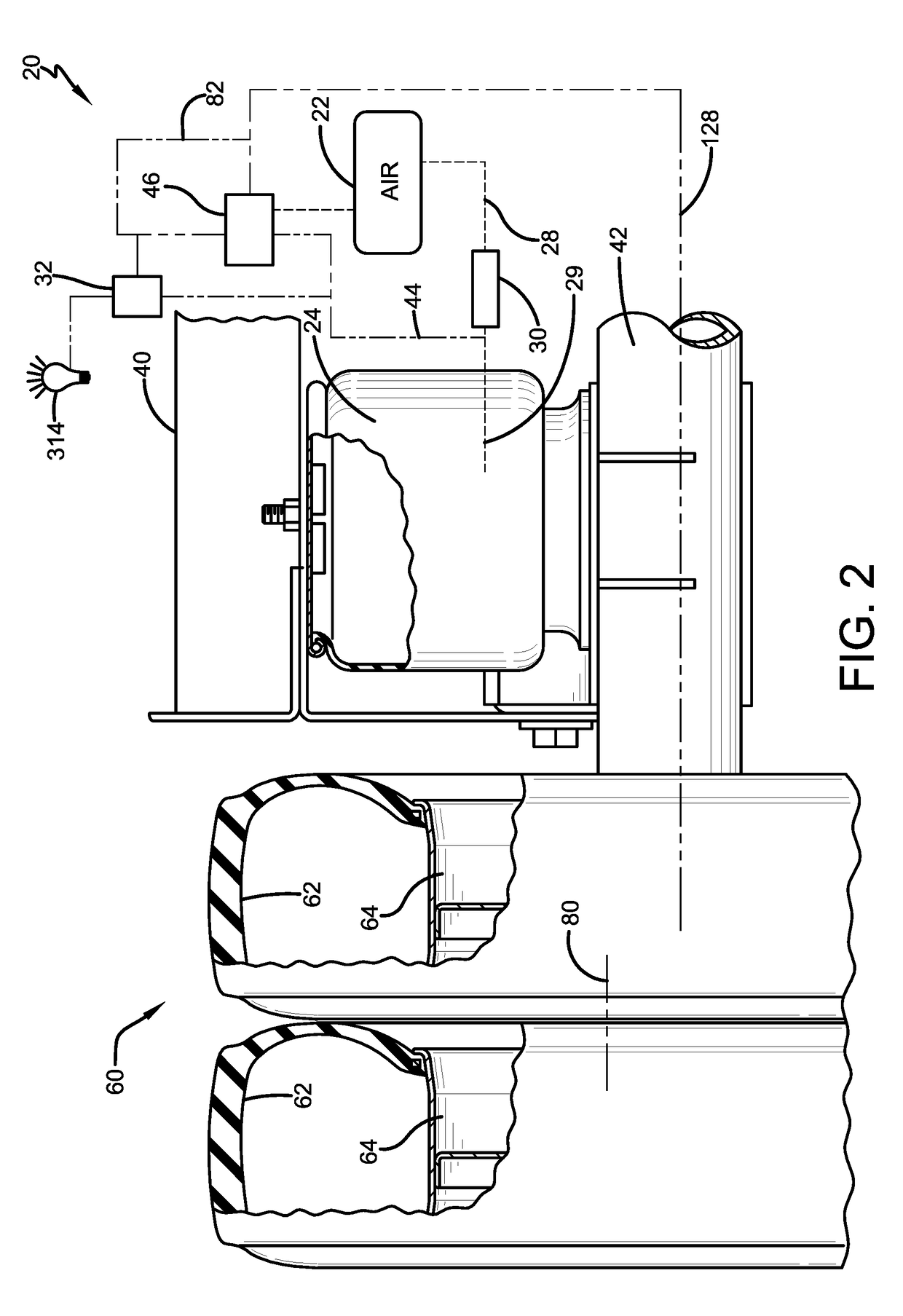Load-based tire inflation system for heavy-duty vehicles
a tire inflation system and tire technology, applied in the direction of heavy duty tires, vehicle maintenance, transportation and packaging, etc., can solve the problems of tire pressure not being checked, difficulty in manually checking and maintaining the optimal tire pressure for each and every tire, and air leakage from tires, etc., to increase and decrease fluid pressure
- Summary
- Abstract
- Description
- Claims
- Application Information
AI Technical Summary
Benefits of technology
Problems solved by technology
Method used
Image
Examples
Embodiment Construction
[0023]For exemplary purposes, details are set forth in order to provide an understanding of the disclosed subject matter. It will be understood, however, that the disclosed subject matter can be practiced and implemented without these specific details.
[0024]A load-based tire inflation system 20 (FIG. 1) according to one aspect, is described generally and is for use on a heavy-duty vehicle (not shown). The load-based tire inflation system 20 continuously monitors the load of the heavy-duty vehicle and automatically and continually adjusts fluid pressure in tires of the heavy-duty vehicle based on the load or total weight of the heavy-duty vehicle. This continuous and automatic pressure adjustment in the tires optimizes the pressure for a given load condition. This type of adjustment improves fuel economy of the heavy-duty vehicle and performance and service life of the tires and reduces equipment downtime and maintenance. As a result, the operating cost of the heavy-duty vehicle is d...
PUM
 Login to View More
Login to View More Abstract
Description
Claims
Application Information
 Login to View More
Login to View More - R&D
- Intellectual Property
- Life Sciences
- Materials
- Tech Scout
- Unparalleled Data Quality
- Higher Quality Content
- 60% Fewer Hallucinations
Browse by: Latest US Patents, China's latest patents, Technical Efficacy Thesaurus, Application Domain, Technology Topic, Popular Technical Reports.
© 2025 PatSnap. All rights reserved.Legal|Privacy policy|Modern Slavery Act Transparency Statement|Sitemap|About US| Contact US: help@patsnap.com



